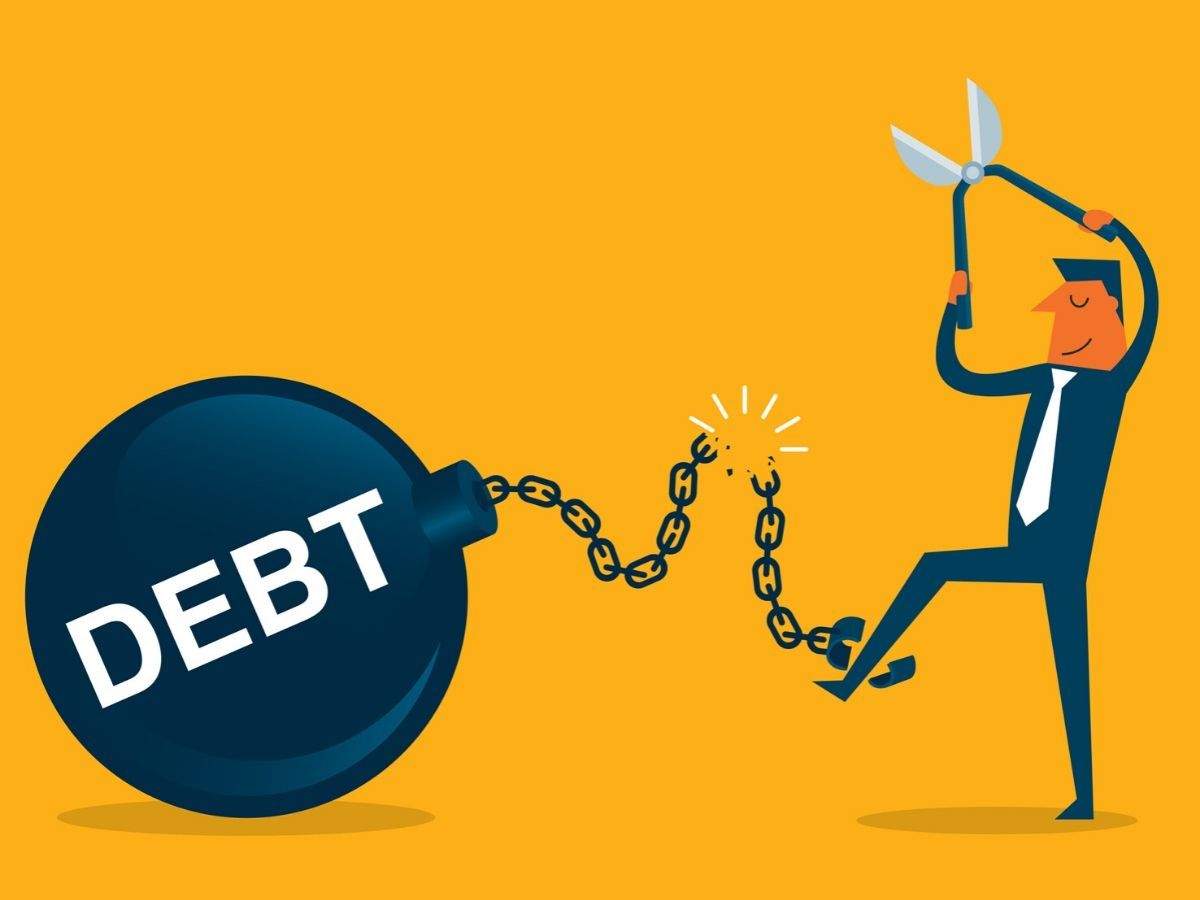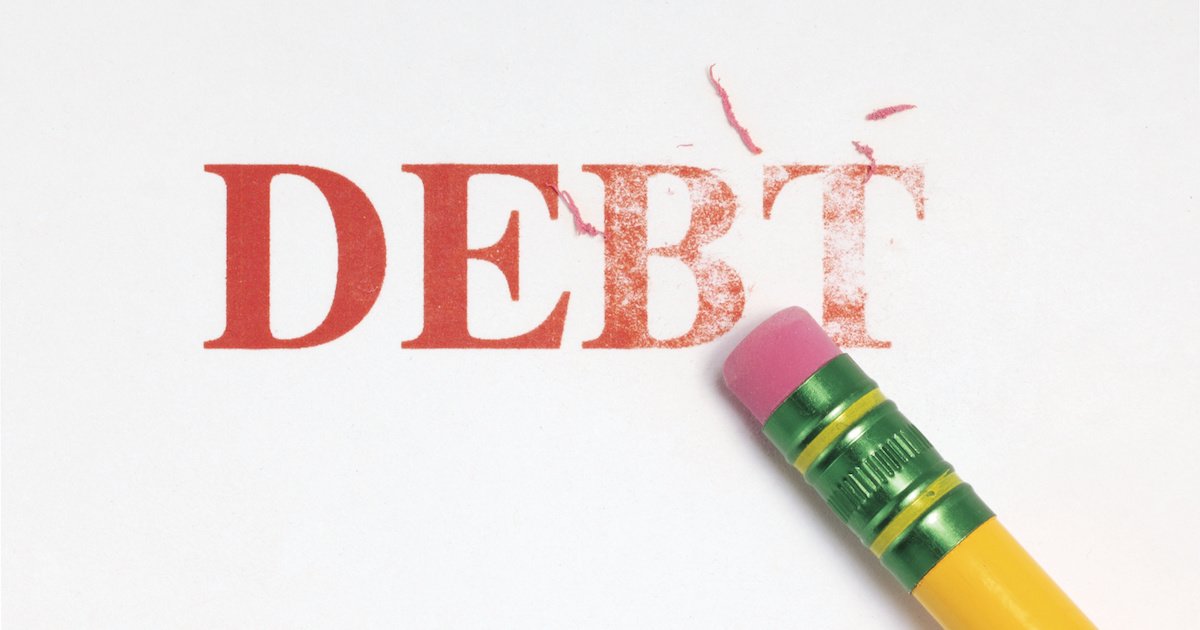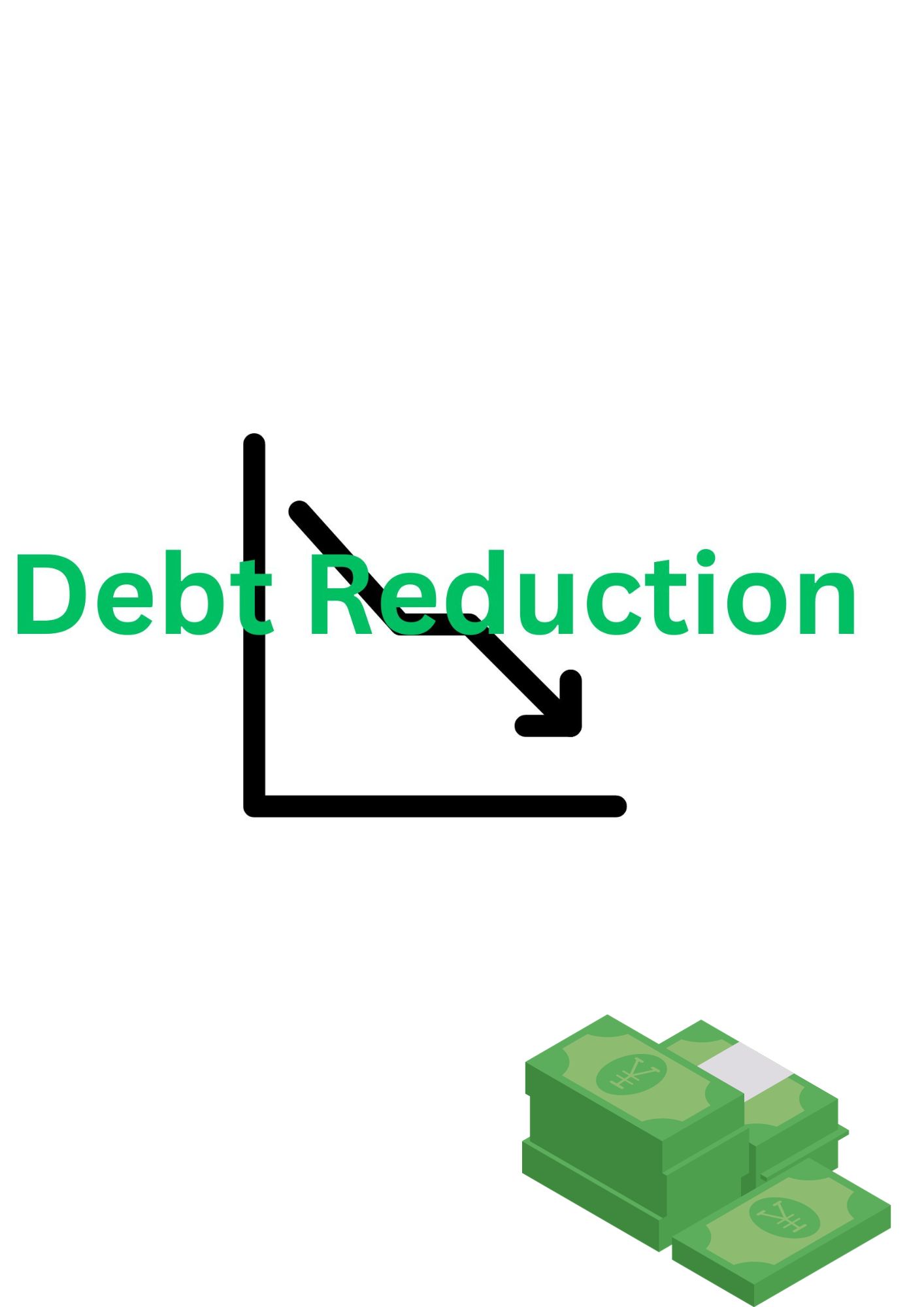Debt Reduction Strategies - How To Strategically Tackle Your Debts?
Discover effective debt reduction strategies to achieve financial freedom. From budgeting to negotiation, master the art of debt management for lasting results.
Author:Emmanuella SheaReviewer:Frazer PughDec 31, 20231.5K Shares77.3K Views

Debt reduction is a financial goal that many individuals strive to achieve in order to attain financial freedom and stability. Managing and reducing debt requires a thoughtful and strategic approach. In this discussion, we will delve into various debt reduction strategiesthat can help individuals regain control of their finances and work towards a debt-free future.
How To Calculate Your Debt?
There are numerous causes for the accumulation of debt. Changes in interest rates, your cost of living, or your own spending habits can all lead to an increase in debt. It might become increasingly distressing as debt increases.
- It's time to take action if you feel that your debt is becoming too much to handle.
- Getting a clear image of your debt is an excellent place to start when trying to manage it. You have the option of doing this alone or with a financial expert's assistance. Compiling the amount you owe may consist of:
- Gathering your monthly statements for your mortgage, credit card(s), line of credit, loan repayments, and any other data that provides you with debt information.
- Enumerating all of your debts and the amount you pay each month. The list can be arranged according to the total amount owed or the interest rate you are paying on each debt.
- calculating the total monthly payment for all of your debts and contrasting it with your spending plan.
- The act of reaching this point is significant. It can also be a significant personal achievement. This is also an excellent time to think about the best course of action for your particular circumstances.
Many people are curious about the finest debt reduction strategies and methods for being debt-free. This tried-and-true debt reduction advice will help, even though it's usually easier to spend money than to pay off debt.
Creating A Detailed Budget For Effective Debt Reduction
A fundamental step on the journey to debt reduction is the creation of a comprehensive budget. This process involves a meticulous examination of income sources, expenses, and financial goals.
Begin by identifying all sources of income, including salary, freelance work, or any additional streams. Accurately documenting income provides a clear understanding of the financial resources available for debt repayment.
Categorize expenses into fixed and variable categories. Fixed expenses, such as rent and utilities, remain constant, while variable expenses, like entertainment and dining out, fluctuate. This categorization helps in identifying areas where spending can be trimmed.
Allocate a dedicated portion of the budget to debt repayment. Prioritize high-interest debts, such as credit cards, to minimize interest accumulation. A well-structured budget serves as a roadmap, guiding individuals toward responsible financial management.
Incorporate an emergency fund into the budget to handle unexpected expenses without relying on credit. This safety net prevents individuals from accumulating more debt during challenging financial situations.
Regularly track expenses against the budget and make adjustments as needed. This proactive approach ensures that individuals stay on course and make informed financial decisions.
Benefits Of A Detailed Budget
- Visibility and Awareness -A detailed budget provides a clear picture of where the money is coming from and where it is going, fostering financial awareness.
- Spending Control -Categorizing expenses helps in identifying areas where spending can be reduced, allowing for more significant debt payments.
- Goal Setting -The budget acts as a tool for setting financial goals, including specific targets for debt reduction and building an emergency fund.
Prioritizing High-Interest Debt For Faster Repayment
This method concentrates on your highest interest rate bills, such as credit card and school loan debt. Since it is the debt that is costing you the most, the objective is to pay it off as soon as possible with the greatest interest rate.
Even while it might not seem like you're making progress, using this strategy will enable you to pay off your highest-priced bills first, which could ultimately result in cost savings.
High-interest debts, particularly those from credit cards, can significantly impede financial progress. Interest charges accumulate quickly, making it essential to prioritize these debts for faster repayment.
Prioritizing high-interest debt is a strategic move to minimize the overall cost of debt. By focusing on the debt with the highest interest rate, individuals can save money that would otherwise be spent on interest payments.
Two common approaches to prioritizing debt are the snowball and avalanche methods. The snowball method involves paying off the smallest debt first, providing psychological motivation. The avalanche method tackles the highest-interest debt first, optimizing financial efficiency.
In the snowball method, individuals start by paying off the smallest debt while maintaining minimum payments on other debts. Once the smallest debt is cleared, the funds previously allocated to it are redirected to the next smallest debt. This process continues, creating a snowball effect and gaining momentum over time.
The snowball method's psychological impact is notable. Successfully paying off smaller debts provides a sense of accomplishment, motivating individuals to stay committed to the debt reduction journey.
The avalanche method, though less emotionally rewarding, is financially efficient. By addressing high-interest debts first, individuals reduce the overall interest paid, potentially accelerating the path to debt freedom.
The Debt Snowball Method
The debt snowball method advocates beginning with the smallest debt, regardless of interest rate. This approach emphasizes quick wins, creating momentum for the overall debt reduction journey.
List debts in ascending order based on the owed amount, regardless of interest rates. The focus is on clearing the smallest debt first.
As the smallest debt is paid off, the freed-up funds are redirected to the next smallest debt. This compounding effect resembles a snowball gaining size and speed as it rolls downhill.
The method's psychological impact is its strength. Clearing smaller debts quickly provides a sense of achievement, boosting confidence and motivation.
The snowball method sustains momentum throughout the debt reduction journey. As each debt is conquered, the motivation to tackle larger debts grows.
The effectiveness of the debt snowball method lies in its alignment with individual psychology. However, choosing between the snowball and avalanche methods depends on personal preferences and financial priorities.
The Debt Avalanche Method
The debt avalanche method is a powerful debt reduction strategy that focuses on minimizing interest payments to expedite the journey to financial freedom. This method involves a systematic approach to paying off debts, emphasizing efficiency and cost-effectiveness.
The debt avalanche method prioritizes debts based on their interest rates. Instead of focusing on the size of the debt, this strategy targets the debt with the highest interest rate first.
By addressing high-interest debts early in the process, the debt avalanche method aims to minimize the overall cost of debt. This strategic approach can result in substantial savings compared to methods that prioritize smaller debts.
Implementation Steps
- List Debts by Interest Rate -Begin by listing all debts, arranging them from the highest to the lowest interest rate.
- Allocate Extra Payments- Allocate any additional funds available for debt repayment to the debt with the highest interest rate while maintaining minimum payments on other debts.
- Snowball Effect -As each debt is paid off, the funds previously allocated to it are redirected to the next highest-interest debt. This creates a snowball effect, accelerating the debt repayment process.
The debt avalanche method is lauded for its financial efficiency. While it may lack the immediate psychological wins of the debt snowball method, it strategically reduces the financial burden over time.
The primary advantage of the debt avalanche method is the potential for long-term savings. By targeting high-interest debts first, individuals can significantly reduce the total interest paid over the life of their debts.
Negotiating Lower Interest Rates
Interest rates play a crucial role in the cost of debt. Negotiating lower interest rates can lead to substantial savings and make debt repayment more manageable.
Consider negotiating interest rates when facing financial challenges or when current rates are higher than market averages. A proactive approach is essential to demonstrate commitment and responsibility.
Steps To Negotiation
- Gather Information -Know the current market interest rates and your credit score before initiating negotiations.
- Contact Creditors -Reach out to creditors by phone or in writing to explain the financial situation and request a lower interest rate.
- Highlight Positive Factors -Emphasize factors like a good payment history or improved credit score that may warrant a rate reduction.
For those uncomfortable with negotiation or facing challenges, enlisting the help of a reputable credit counseling agency can be beneficial. These agencies often have established relationships with creditors and may negotiate on behalf of the borrower.
Even a slight reduction in interest rates can result in significantly lower monthly payments. This can free up funds for additional debt repayment or other financial priorities.
Exploring balance transfer options to credit cards with lower interest rates is another strategy. However, it's crucial to be aware of any transfer fees and introductory rate periods.
Negotiating lower interest rates may require persistence. Be prepared to make a compelling case for why a rate reduction is justified and stay committed to the process.
Debt Consolidation
Debt consolidation involves combining multiple debts into a single loan or credit account. The goal is to simplify repayment and, in some cases, secure a lower overall interest rate.
Types Of Debt Consolidation
- Personal Loans -Individuals can take out a personal loan to pay off multiple debts, consolidating them into a single monthly payment.
- Balance Transfer -Transferring high-interest credit card balances to a card with a lower interest rate, often with a promotional period, is another form of consolidation.
Consolidating debts streamlines the repayment process. Instead of managing multiple payments, individuals have one monthly obligation, making it easier to track and manage.
Securing a lower interest rate through consolidation can lead to significant savings over time. This is particularly advantageous for high-interest debts.
Potential Pitfalls
- Hidden Fees -Individuals should be aware of any fees associated with debt consolidation, such as loan origination fees or balance transfer fees.
- Discipline is Key -Consolidating debt doesn't eliminate it. To benefit fully, individuals must remain disciplined in their spending and commit to repaying the consolidated amount.
Consulting with a financial advisor or credit counselor is advisable before proceeding with debt consolidation. They can assess individual circumstances and recommend the most suitable consolidation strategy.
While consolidating debt can have positive effects on credit scores, individuals should be cautious not to incur more debt. Closing paid-off accounts may impact credit utilization ratios.
Exploring Debt Settlement
Debt settlement is a financial strategy that individuals may consider when facing severe financial hardship and struggling to meet their debt obligations. While it can provide relief, it comes with its own set of challenges and consequences. Let's explore the concept of debt settlement in detail.
Debt settlement involves negotiating with creditors to settle the outstanding debt for a lower amount than what is originally owed. This can be a lump-sum payment or a structured settlement plan.
Debt settlement is typically considered when other debt reduction strategies prove insufficient, and the individual is at risk of defaulting on payments. It's crucial to explore this option only after a thorough assessment of one's financial situation.
Given the complexities of debt settlement, seeking professional guidance is advisable. Debt settlement companies or financial counselors can provide insights, negotiate with creditors, and guide individuals through the process.
Increasing Income Streams For Accelerated Debt Repayment
Increasing income streams is a proactive approach to expedite the debt reduction process. Supplemental income provides extra funds that can be directed towards debt repayment, accelerating the journey to financial freedom.
Taking on a part-time job or engaging in freelance work are effective ways to boost income. Many individuals find success in leveraging their skills or pursuing hobbies that can generate additional income.
Consider monetizing skills or hobbies, such as writing, graphic design, or photography. Online platforms offer opportunities to showcase and sell these skills, creating a viable income stream.
Investing in income-generating assets, such as real estate or dividend-paying stocks, can create passive income. This steady stream of income can be earmarked for debt repayment.
Investing in education and skill development can open doors to higher-paying opportunities. Continuous learning enhances professional capabilities, making individuals more competitive in the job market.
It's crucial to budget the additional income wisely. Allocating a significant portion to debt repayment while still allowing for personal needs ensures a balanced financial approach.
Increasing income not only aids in debt reduction but also contributes to long-term financial independence. The skills and experiences gained during this process can have a lasting impact on one's financial trajectory.
Building An Emergency Fund
Building an emergency fund is a critical aspect of any debt reduction strategy. This fund acts as a financial safety net, preventing individuals from resorting to credit in times of unexpected expenses.
The size of an emergency fund should ideally cover three to six months' worth of living expenses. This ensures adequate financial cushioning in case of job loss, medical emergencies, or unforeseen circumstances.
Contributing regularly to the emergency fund, even while repaying debt, is essential. Small, consistent contributions can add up over time, providing a solid financial foundation.
An emergency fund serves as a preventive measure against accumulating more debt. Without such a fund, unexpected expenses might force individuals to resort to credit cards or loans, derailing the debt reduction plan.
Emergency funds should be easily accessible in low-risk accounts. While it's essential for the fund to grow, its primary purpose is to be available when needed most.
During the debt reduction journey, individuals may need to adjust their financial priorities. Balancing debt repayment and emergency fund contributions is crucial for overall financial stability.
Beyond debt reduction, an emergency fund contributes to long-term financial resilience. It instills a sense of financial security and empowers individuals to navigate life's uncertainties without compromising their financial well-being.
Debt Reduction Strategies - FAQs
What Are Some Effective Debt Reduction Strategies?
Effective debt reduction strategies include creating a detailed budget, prioritizing high-interest debt, and exploring methods like the debt snowball or debt avalanche.
How Does The Debt Avalanche Method Work?
The debt avalanche method prioritizes debts with the highest interest rates, aiming to minimize overall interest payments and save money in the long run.
Is Negotiating Lower Interest Rates With Creditors Possible?
Yes, negotiating lower interest rates with creditors is possible. Contacting creditors, explaining the financial situation, and expressing a commitment to repayment may lead to favorable adjustments.
When Should I Consider Debt Settlement?
Debt settlement may be considered in cases of severe financial hardship. It involves negotiating with creditors to settle the debt for a lower amount than what is owed.
How Can I Increase My Income To Pay Off Debts Faster?
Increasing income can involve taking on a part-time job, freelancing, or monetizing skills and hobbies. The extra income can be directed towards paying off debts.
When Should I Seek Professional Guidance For Debt Reduction?
Professional guidance should be sought when managing debt becomes overwhelming. Financial counselors, debt management agencies, or bankruptcy attorneys can provide tailored advice based on individual circumstances.
Conclusion
Debt reduction is a multifaceted process that requires commitment, discipline, and strategic planning. By implementing a combination of these debt reduction strategies, individuals can regain control of their finances and work towards a debt-free future. Whether through budgeting, prioritizing debts, or seeking professional assistance, the key is to take proactive steps toward financial well-being.
Jump to
How To Calculate Your Debt?
Creating A Detailed Budget For Effective Debt Reduction
Prioritizing High-Interest Debt For Faster Repayment
The Debt Snowball Method
The Debt Avalanche Method
Negotiating Lower Interest Rates
Debt Consolidation
Exploring Debt Settlement
Increasing Income Streams For Accelerated Debt Repayment
Building An Emergency Fund
Debt Reduction Strategies - FAQs
Conclusion

Emmanuella Shea
Author

Frazer Pugh
Reviewer
Latest Articles
Popular Articles

